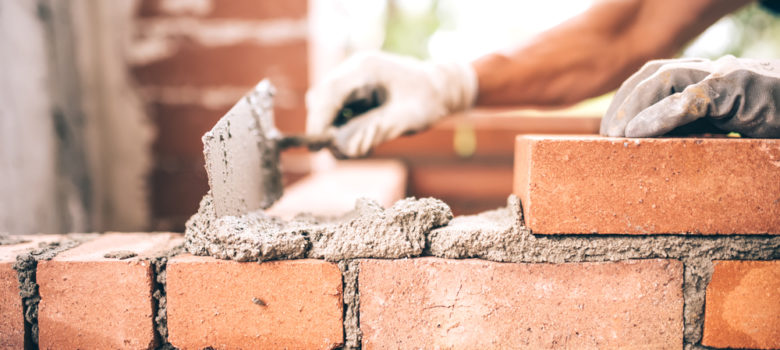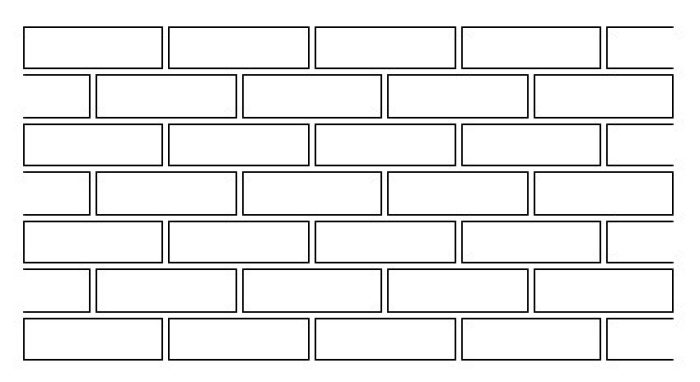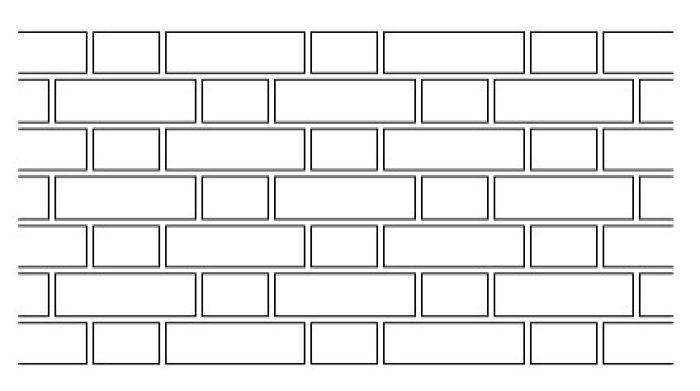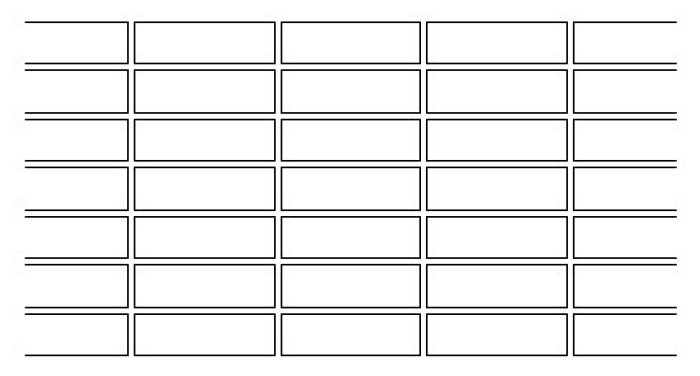
What is the best kind of brick bond?
Brick bonds are the name given to the different patterns that bricks can be laid in. It’s necessary to offset rows of bricks to avoid a continuous verticle line of mortar, which would significantly weaken the structure.
Before we get going, here’s a top tip about the lingo – the “stretcher” is the long side of the brick, and the short side is known as the “head” or “header”.
Stretcher Bond

This is probably the most common type of bond, since it’s the most obvious solution. It’s called a stretcher bond because all the bricks are all laid with the stretcher side facing out, in alternating rows. Stretcher bonds are sometimes known as a running bond and are often used for internal or partition walls, since they can be a single brick thick. They’re a very cost-effective way to lay brickwork and require the least skill, since it’s the most straightforward bond.
Header Bond

Not very popular anymore, but a favourite of centuries past, a header bond is made up entirely of headers in alternating rows. It’s not nearly as economical as a stretcher bond, but it was favoured b the wealthy in eras past to show off their wealth (since it requires a lot of bricks) and create pleasing visuals.
English Bond

This is another common type of bond that you see used on a lot of British buildings and is easy to spot since it’s such a distinctive pattern. The English brick bond alternates rows of headers with rows of stretchers. This type of wall-building uses more bricks than a stretcher bond, so is rarely used for largescale residential developments, but it is often considered one of the best and strongest brick bond designs around. For that reason it’s used a lot for largescale engineering projects – a lot of the bridges and viaducts you see around are done in the English bond style. In terms of aesthetics, it’s also considered a bit of a classic so it’s come back into fashion in the last few decades.
Flemish Bond

A flemish brick bond alternates headers and stretchers in each row so that every header is sandwiched between the centre of each stretcher from above and below. There are variations of the Flemish brick bond, but mostly they indicate a double-skinned wall. Beware though, a Flemish finish doesn’t necessarily indicate a solid wall since it’s not uncommon to use half-bricks to create an outer-skin
Stack Bond

Stack brick bonding is basically the style of brick laying that all other brick-laying is trying not to be. By stacking the bricks in directly aligned rows of stretchers, the wall created is extremely weak and unable to take any kind of load. Stack bonds are therefore unsuitable for external and load bearing walls. They are, however sometimes implemented for aesthetics and decorative brick finishes.
Other bonds
There are plenty more types of brick bonds that are popular in different eras and locations, but none as popular and easy to spot as those we’ve listed here. Still, if you can make a pattern of it, there’s probably a brick bond that looks like it.
Think we missed something? Do you have a different opinion?
Comment below to get your voice heard…












rat trap bond
English bond does not require more bricks than the unskilled stretcher bond, period. The surface area on the top of each brick is the same; hence how do you configure that statement? Get four bricks and place one brick flat in front of you with the stretcher side facing you, then put another brick directly behind it (typical of a two course wall) whereas the stretcher sides are touching. With the two remaining bricks, do the same thing to the left or the right of the first two. Now rotate the last two bricks 90 degrees while keeping the stretcher sides touching. Grab those two and place them on top of the first two. So tell me how the English bond requires more bricks?
Cheers,
John
Often old handmade bricks are only finished on one strecher face, so to build with an English bond requires more bricks with finished ends which were typically more expensive.